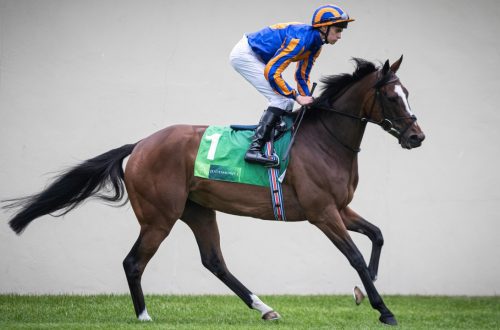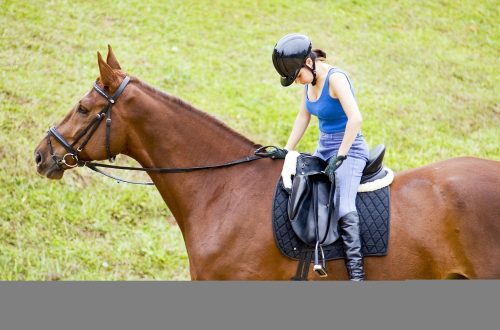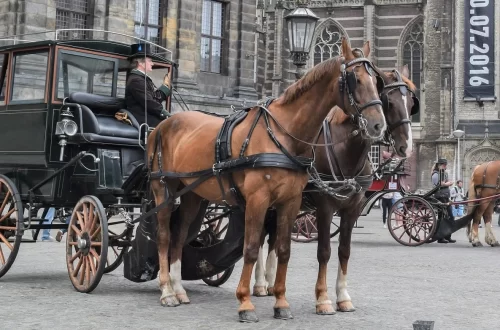
Inner mood. Tips for beginners
Inner mood. Tips for beginners
Horses are excellent psychologists and quickly read the inner state of the rider. In fact, they can be called telepaths. You won’t succeed in riding if your four-legged partner doesn’t see you as a confident leader!
During the first lessons of riding a horse, out of excitement or inattention, we forget to follow the actions of our body, and even more so, the thoughts in our heads. That is why it is so important to understand that horses are excellent psychologists and are able to instantly analyze us from the first moment they meet.
Many beginners are surprised that a horse while riding looks at his rider. She does this thanks to an amazing device and the position of her eyes, which give her an almost circular view!
Since the language of horses when communicating with their own kind is, first of all, body language, they perfectly apply their knowledge to people. If you sit astride clumsily, move abruptly, then your horse feels your excitement and insecurity immediately.
But even more amazing for beginners is that horses seem to read their minds!
Professors of psychoanalysis are usually training horses from the production line. They have seen so many “dummies” in their lives that literally in the first five minutes they form their opinion about a new person according to his thoughts and reactions to the world around him.
In order to earn the respect, and as a result, the obedience of the horse, you need to become a leader for it. The leader never fusses either in movements or in thoughts. He is always calm and confident, thinks only about business and knows in advance what he wants. He is fair, kind and attentive to his subordinates, like a good boss.
If you approach the horse with a smooth, confident step, talk to him in a soft voice, your movements during landing are not fussy and thoughts “oh, I can’t” or “oh, what if!” are not spinning in your head, then the horse will behave with you it is calmer, it is easier to tune in to cooperation.
I advise many students not to approach quickly and not to mount the horse right at the beginning of the lesson. It is much more important to first clean up in your head, take a deep breath, meditate on the state of the leader. Only after achieving balance in oneself can one approach, get acquainted with the horse and sit in the saddle.
More often than not, the horse’s disobedience, unexpected “fear”, playing along or nervous behavior are the result of a reaction to you, your thoughts and your indecision.
From the chaos in the head of the rider, his balance when riding also deteriorates. The back stoops, muscles involuntarily tighten, extra movements of the arms and legs appear, which also do not contribute to competent work with the horse.
It also happens that the horse is ready to listen to you, no matter what, but you yourself have not yet decided exactly where you need to go and at what speed. At the same time andsometimes it may be enough to remember and imagine an episode of a beautiful race from your favorite movie – and the horse has already broken into a gallop.
Work on yourself, on your perception of horses and riding. Fight fears.
If you like to sleep, you can combine business with pleasure. Sleep training is much more effective than you might think!
It’s enough just to promise yourself to ride a horse before going to bed, and in a dream to remember and implement all the coach’s advice from the last riding lessons. In a dream, everything is simpler, and in reality you will be surprised how much more confident you feel in the saddle in reality.
This is exactly how I managed to learn how to gallop in one dream in my childhood. I just rode a lot on a horse through fields and forests and gained self-confidence, and my brain understood something important about relaxation and proper landing.
Train yourself to control yourself and you will be surprised at your progress in riding.
Irina Roven, head of the Horse Yard / Equestrian Eco-School and Lama Park Eco park “Yasno Pole”.
- Luckypom 6 March 2017 city
Yes, my thoughts are spinning) And what’s interesting is how she began to gallop, she seemed to become more confident, but no .. Previously, she grabbed a horse and only looked at her, didn’t pay attention to other riders and wasn’t afraid of them. Now I look at them and see a threat: what if they don’t go around me, what if they don’t hold the horse back and we crash and how we all fall)) It’s fun. Answer
- selfish 9 March 2017 city
If you are a beginner and the rest of the riders are experienced, riding ethics tells them to get around you. If your level is about the same, then you need to pay attention to each other. There are certain rules for riding in the arena: riders move around with the left stirrups, the rider gives way to the shift, etc. Those. if you are driving to the right, then you must go around everyone. If you are riding separately and a shift is moving towards you (several riders working together), you must also give way to them. Details and nuances should be explained to you by your trainer. And the article is excellent, directly PPKS. Answer
- idiass 22 March 2017 city
Thank you! great article! And by the way, about mental training: this is a very effective way. The main thing is to feel all the nuances “like live”: the rhythm of the horse, the movements of the body and the reins, as well as the look: it should be several meters ahead of the horse, and not “under the horse” Response
- nhl-super.ru 5 September 2017 of
Excellent, very instructive article





